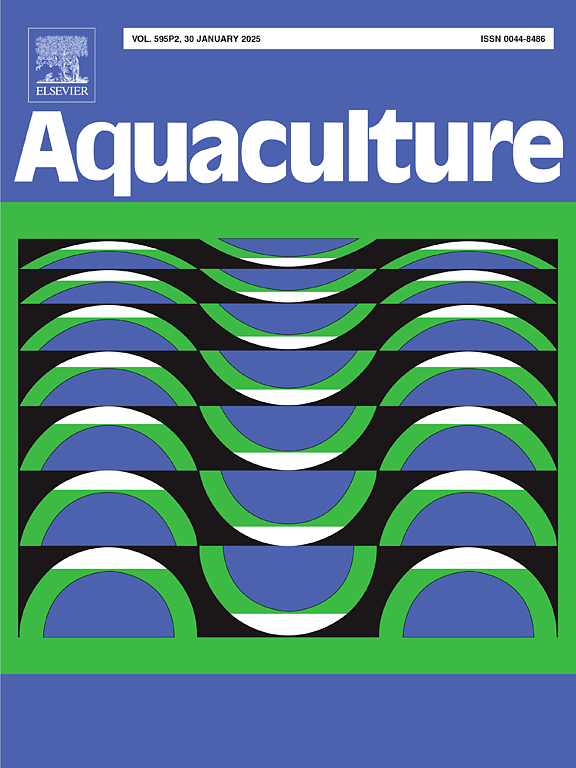The formation of a hybrid fish derived from Labeo rohita ♀ × Cyprinus carpio ♂ and exhibiting stronger low temperature tolerance
IF 3.9
1区 农林科学
Q1 FISHERIES
引用次数: 0
Abstract
Temperature is a critical environmental factor that influences the distribution of species and impacts life activities such as development, growth, physiology, and metabolism. In China, the rearing range of Roho labeo (Labeo rohita) has been restricted due to its limited low temperature tolerance. In this study, a hybrid population, designated RLC, was produced from Labeo rohita (RL, 2n = 50) (♀) × Cyprinus carpio (CC, 2n = 100) (♂). Comparative analyses of morphological traits, DNA content, and chromosome numbers revealed that RLC (2n = 75) is a hybrid fish, with the genotype and phenotype distinct from its parent species. RLC demonstrated enhanced low temperature tolerance compared to RL, the CTmin (9.04 ± 0.83 °C) and TLD50 (4.1 °C) for RLC were markedly lower than RL (12.08 ± 1.25 °C, 7.2 °C). Biochemical indices and histological analysis indicated that low temperature stress induced structural damage and oxidative stress in the liver, gills, and brain of both RLC and RL, with notable improvements in RLC compared with RL. The joint analyses of transcriptomics and metabolomics showed that metabolic pathways in the liver of RLC were most significantly impacted by low temperature stress. Additionally, regulation of lipid metabolism appears to be vital for the response of RLC to low temperature stress. Our findings contribute to the understanding of distant hybridization and the molecular mechanisms underlying the response to low temperature stress in fish.
求助全文
约1分钟内获得全文
求助全文
来源期刊

Aquaculture
农林科学-海洋与淡水生物学
CiteScore
8.60
自引率
17.80%
发文量
1246
审稿时长
56 days
期刊介绍:
Aquaculture is an international journal for the exploration, improvement and management of all freshwater and marine food resources. It publishes novel and innovative research of world-wide interest on farming of aquatic organisms, which includes finfish, mollusks, crustaceans and aquatic plants for human consumption. Research on ornamentals is not a focus of the Journal. Aquaculture only publishes papers with a clear relevance to improving aquaculture practices or a potential application.
 求助内容:
求助内容: 应助结果提醒方式:
应助结果提醒方式:


